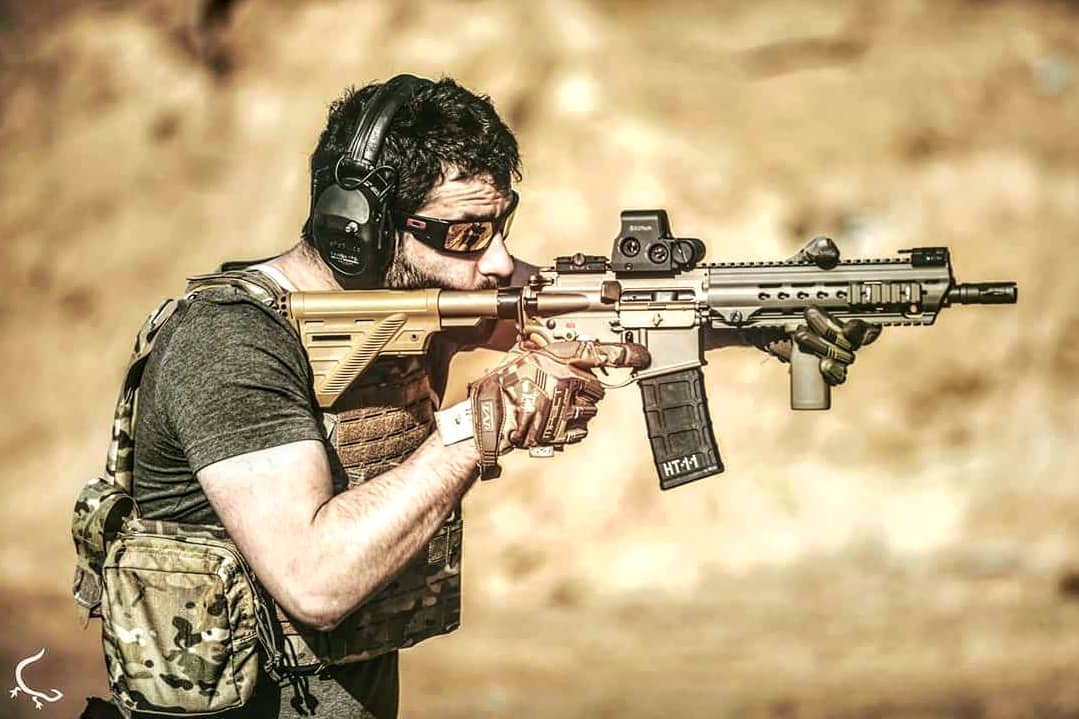In the video – A specific practice drill for HL to LH in different situations – and reasons.
High Low and Low high are two methods that allow a team to present more guns and visual control into a room or specific direction without using or restricting too much working space or increasing exposure. If done properly, both methods can increase the ability to handle, ID, call out or work out a threat in addition to other complexities that might occur. It has also several advantages in Low light situations as well.
Some things to keep in mind when working either of those methods.
1.Exposure. Watch out for dropping the knee beyond your partner. In room clearing context that will result in exposing your body to the next series of angles – without being able to see those. Your partner position should be allighned naturaly with what he use as concealment / cover apex. Use it. we call it miroring the partner.
2.Stability. Leaning out with all your weight (plate,helmet,gun) over the supporting knee or alternatively – poor kneeling position will result in stability issue which can very quick cause the individual fall into the exposure.
3.Kneeling – High knee results in slightly more exposure while deep knee is easier to handle exposure wise. On the other hand, high knee is more stable while deep knee is even less stable. Also avoid squatting – it increases fatigue sensation and often most individuals will be using their front tips, which leads to instability.
4.Weapon manipulation. When going low, avoid high ready or TI position as you will flag your partner. While virtually even with low ready you might still flag, high ready is more prone for devastating results.
5.Body contact. Muzzle before flesh (Hat tip to HTS), forearms contact. When using pistols or short platforms like the MP7, contact between the palms and hips should be indication of safety violation – earn it.
6.Trigger finger over head – Low high is much more prone to accidents (especially with handguns). Therefore, when working Low high, the man at the high should have at a minimum the palm of he’s trigger finger above hes mates (at the low) head, so if the Low bails out and stand up he will not be beyond your muzzle and hes head / helmet will deflect the arms away we call it the palms overhead principle. Same applies to carbine although it is much easier and self-explanatory.
There are much more points to how HL or LH could be beneficial in either being more effective or safer. Join one of our CQB courses and see the system for your self. Everything as a reason and explanation.
Wishing you all a great weekend
-PG staff
Learn more about our friend Eli and Project Gecko:
Project Gecko is a company which specializes in the field of Tactical Training & consultant services. Their capabilities ranges from setting up Tactical courses & projects to consultant services. During their courses Gecko instructors give their participants the mental and physical tools for their personal success.
They offer a wide spectrum of programs that take place in one day classes, three-days-seminars, and events up to one week. All those programs are based and created on their knowledge which they unpack and repack in a way that will suit every participant. For Gecko the gear is just a tool and the will is the key. Gecko believes that every person who has the will, will find his place in their seminars and workshops.
The instructors behind Project Gecko are all former military personal with extended training’s and combat experience. Eliran founder of Project Gecko was born in Israel. Before he moved to Germany he served in the IDF in one of the SF units.
Find out more about Project Gecko

